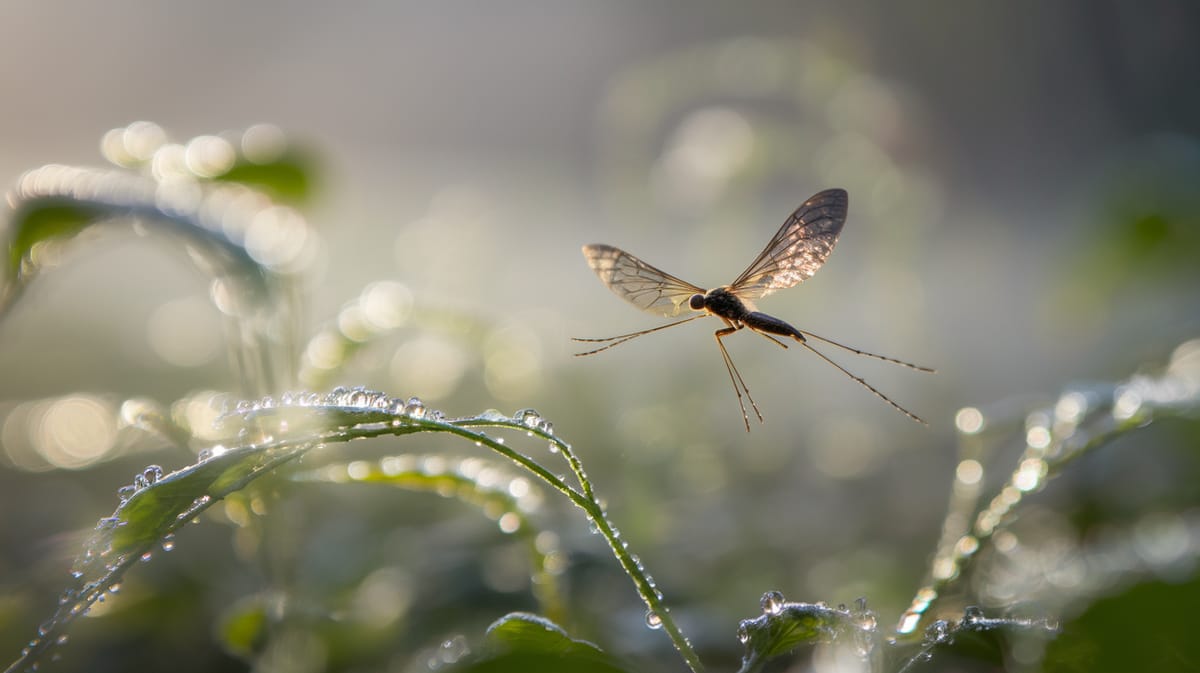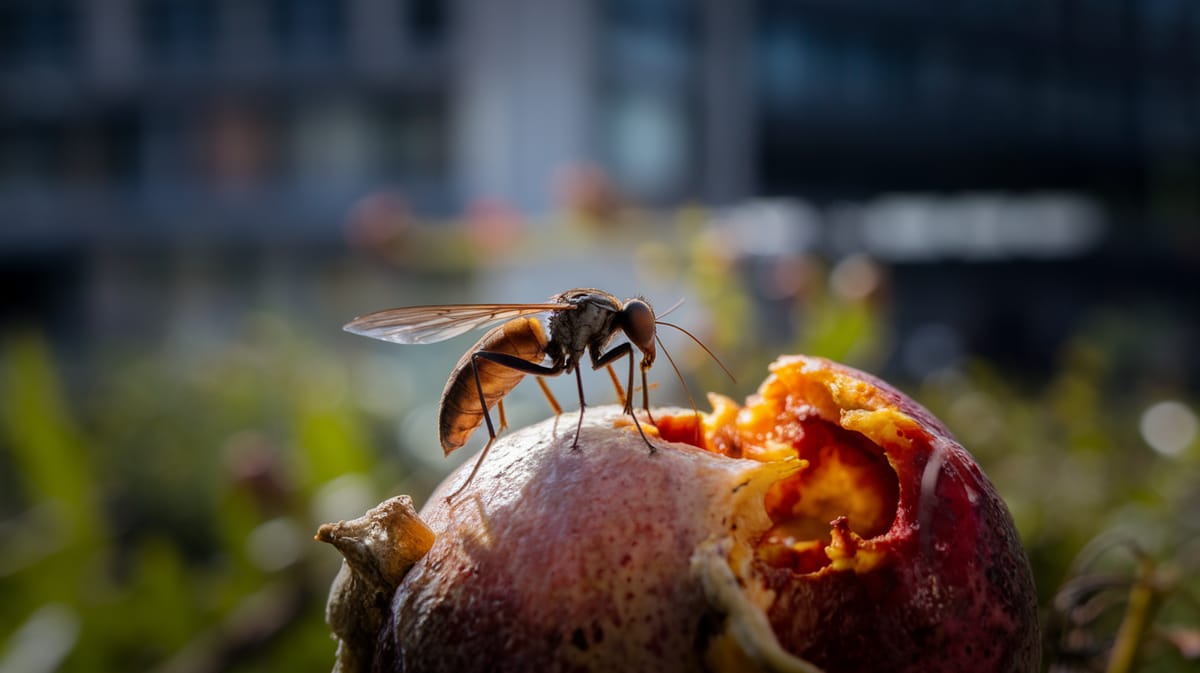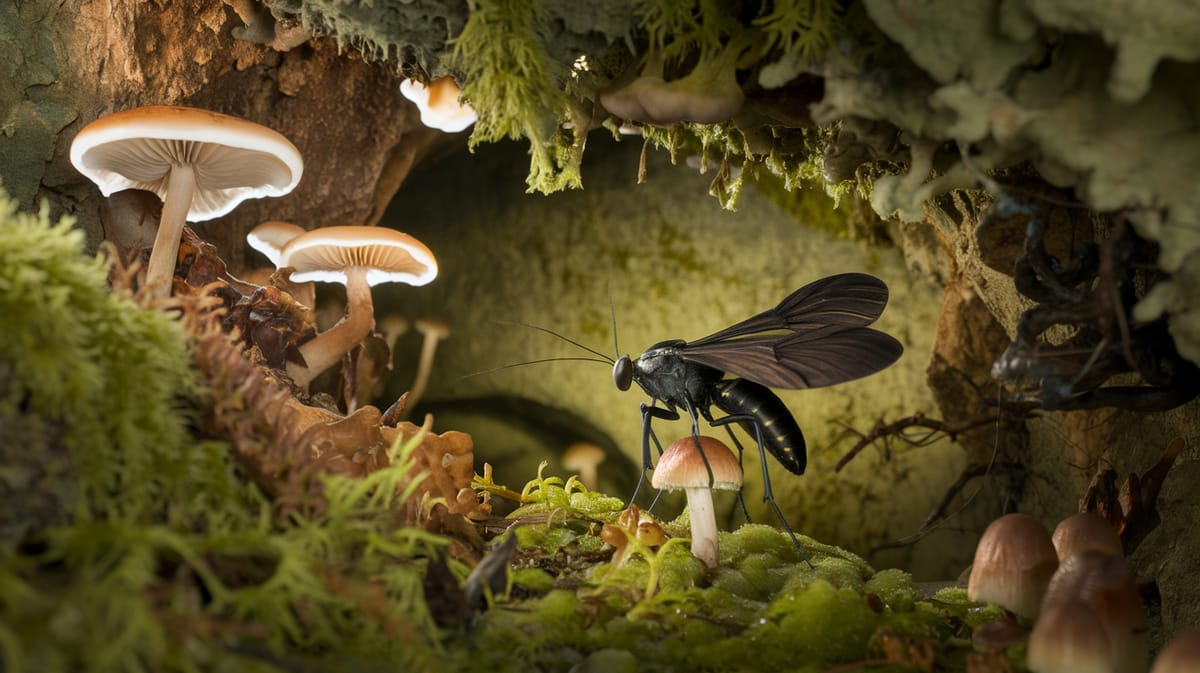Dark Winged Fungus Gnat
Tiny yet persistent, the Dark Winged Fungus Gnat thrives in moist environments, aiding in decomposition. Its larvae play a crucial role in breaking down organic matter.

Key Insights at a Glance
Did You Know?
Taxonomy & Classification
Dark Winged Fungus Gnats exhibit specialized adaptations for their unique ecological niche, thriving in damp, decaying environments where they facilitate decomposition through their feeding habits. Let's understand the evolutionary journey and classification of these remarkable decomposers.
Global Presence
Bradysia species are found on every continent except Antarctica, highlighting their adaptability to diverse climatic conditions.
Evolutionary Resilience
Originating in the Mesozoic era over 100 million years ago, these gnats have survived numerous ecological shifts due to their adaptability.
Lifecycle and Growth
A remarkable journey of transformation from Egg to Adult.
Egg
Laid in moist soil, eggs hatch rapidly, initiating the life cycle and laying the groundwork for subsequent stages.
Larva
Larvae feed on fungi and decaying organic matter, playing a crucial role in nutrient recycling within the soil.
Pupa
Transitioning within protective cocoons, pupae undergo metamorphosis to emerge as adult gnats ready for reproduction.
Adult
Adults, equipped with delicate wings, focus on reproduction and dispersal, often seen around light sources.
Dietary Habits
Prefers to feed on decaying organic matter and fungi, using its larvae to break down plant material and detritus.
| DIET TYPE | DESCRIPTION |
|---|---|
| Primary Diet | Primarily consumes fungi and decaying plant material, essential for larval development and growth. |
| Secondary Diet | Feeds on microorganism-rich soil and organic debris, supplementing its fungal diet when fungus is scarce. |
| Occasional | Occasionally ingests root exudates and algae, exploiting varied resources in nutrient-poor environments. |

Behaviour and Adaptations
Discover the fascinating abilities that enable the Dark Winged Fungus Gnat to thrive in its environment.
Moisture Detection
Highly sensitive to moisture, aiding in locating prime breeding sites.
Rapid Reproduction
Short life cycle allows quick population growth in favorable conditions.
Larval Adaptability
Larvae adapt to feed on various fungi, maximizing survival chances.
Ecosystem Impact
Ecosystem Impact: Understanding how Dark Winged Fungus Gnats contribute to ecological balance and sustainability.
Decomposer Assistants
Larvae help break down organic matter, enriching soil and promoting nutrient cycling.
Pollination Partners
Adults contribute to pollination by transferring pollen between flowers during feeding.
Food Web Contributors
Serve as prey for various predators, maintaining balance in the food web.
Conservation Challenges
Understanding and addressing the major threats to Dark Winged Fungus Gnat populations.
Habitat Loss
Urban sprawl and deforestation reduce vital habitats for gnats.
Chemical Exposure
Pesticides and pollutants disrupt gnat life cycles and ecosystems.
Climate Change
Altered weather patterns affect gnat breeding and food sources.
Frequently Asked Questions
How long do Dark Winged Fungus Gnat live?
Dark Winged Fungus Gnats typically live for about one to two weeks as adults. During their lifecycle, they spend most time in the larval stage, which lasts around two weeks, before emerging as adults to reproduce.
What do Dark Winged Fungus Gnat eat?
Dark Winged Fungus Gnats primarily feed on fungi, decaying organic matter, and plant roots. The larvae are more damaging as they consume the roots of seedlings and young plants, which can stunt growth and lead to plant damage.
Are Dark Winged Fungus Gnat poisonous?
Dark Winged Fungus Gnats are not poisonous to humans. They do not bite or sting, and their primary harm is to plants, where larvae may damage roots. They are mostly a nuisance rather than a health threat.
Are Dark Winged Fungus Gnat endangered?
Dark Winged Fungus Gnats are not considered endangered. They are common in many environments, especially where there is abundant moisture and organic material. Their populations are stable, and they thrive in conditions favorable to fungi and decaying matter.
What do Dark Winged Fungus Gnat symbolize?
Dark Winged Fungus Gnats do not have significant symbolic meanings. They are often associated with damp environments and organic decay. In symbolic terms, they might represent persistence or the unseen layers of natural ecosystems.
Do Dark Winged Fungus Gnat bite?
Dark Winged Fungus Gnats do not bite humans or animals. They are harmless to people and pets, focusing primarily on fungi and plant roots for sustenance. Their presence is more of an annoyance than a direct threat to health.
What color are Dark Winged Fungus Gnat?
Dark Winged Fungus Gnats are typically black or dark gray. Their small, slender bodies and dark wings give them a characteristic appearance that helps distinguish them from other small flying insects.
Does a Dark Winged Fungus Gnat have wings?
Yes, Dark Winged Fungus Gnats have wings. They are small flying insects, and their wings are typically dark and transparent, allowing them to move efficiently in their search for food and breeding sites.
What does a Dark Winged Fungus Gnat look like?
Dark Winged Fungus Gnats are small, about 1/8 inch long, with slender bodies and long legs. They have dark, delicate wings and are often mistaken for small mosquitoes. Their larvae are white or translucent with black heads.
Is a Dark Winged Fungus Gnat an insect?
Yes, Dark Winged Fungus Gnats are insects. They belong to the family Sciaridae in the order Diptera, which includes flies. Like other insects, they have a three-part body structure, six legs, and wings, fitting the basic insect characteristics.
Related Insects
Discover insects with similar characteristics to Dark Winged Fungus Gnat - including shared habitats, diets, and taxonomic classifications
Share this profile
Help others discover Dark Winged Fungus Gnat
